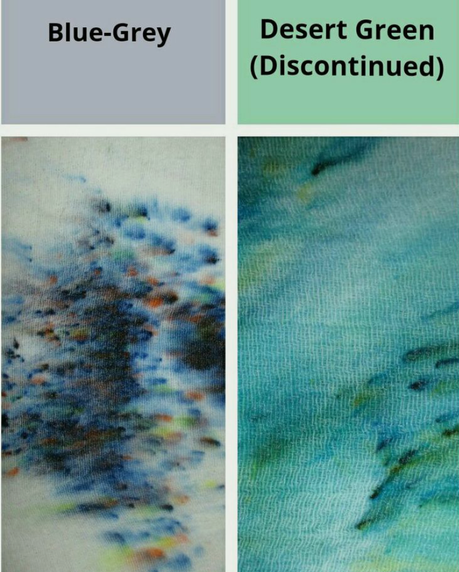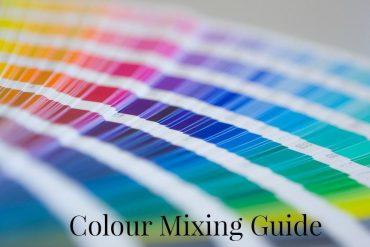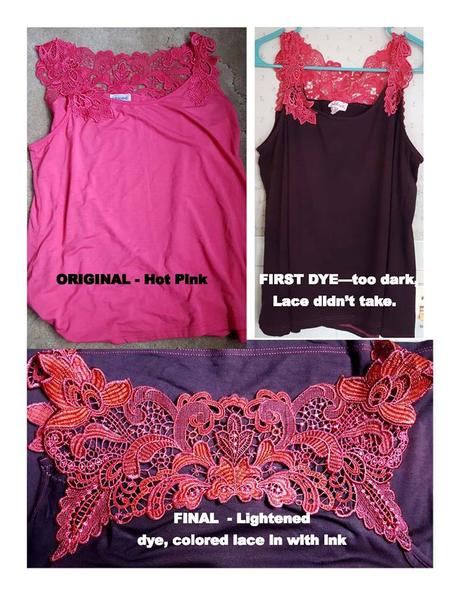Thinking about overdying your clothes to make them into a more flattering colour for you? It's such a great way of bringing new life into clothing, and even masking stains you may have gotten on a favourite item. As we get lots of overdying questions, I've asked Ms MakeItOver Bernadette to answer your most frequently asked questions about dying.
This is not a "stand-alone" article about dyeing, so if you haven't read the other three blogs, please do so before proceeding here as you may discover the answer to your question in them.
Guide to Overdying Garments To a Fabulous New Colour
How to Overdye Difficult Colours Such as White, Beige, Navy and Orange
Everything You Need to Know to Overdye Your Clothes at Home and Get a Brilliant Result
How do I know how much Procion fiber reactive dye to use?
Dharma's Procion dye colour chart is showing the results of one tablespoon of dye on cotton fabric. If you want a lighter or darker result, you can use less or add more! If you are unsure, it's best to start with half a tablespoon and observe the item as you stir during the first twenty minutes before you add any soda ash. If you add more dye or even another colour to "tweak" a colour into the direction you want, you need to start the twenty minutes over again before adding soda ash! This is also why I suggest only dyeing one item at a time, since each weave and texture of even the same type of fabric can yield very different results. There is a way to weigh and measure (all very scientific) both your fabric and the dye, but that doesn't always give you what you want if the fabric has other ideas! I get my best results by keeping a picture or sample of the colour I want where I can see it and going a value or two darker than that since the fabric is darker when wet.
Here is a perfect example"A" is a cotton twill stretch woven fabric which is about 3% elastane content. I wanted it to be a medium grey (and I got what I wanted) and for the purposes of demonstration, I added "C" which was a white cotton tee shirt jersey fabric remnant (I love all greys, so it'll turn into something). I'm not sure if it was 100% cotton or not! "A" demonstrates the colour I wanted, "B" is its reverse side (and you can see raw edges which took no dye on elastane threads) which was considerably lighter, and "C" is the teeshirt jersey. This would have been a disaster if I wanted the two fabrics to match!
Just as a side note, be especially careful dyeing modal! I was dyeing yardage and it gobbled up every molecule of dye within a few minutes! Little piggies!
What do they mean when they say that Procion colours can shift on silk?
The best way to think of this is to think of silk as a "picky eater". Many colours are a mixture of other colours and silk likes to take what it likes first! If you look at the Procion Blue-Grey particles below, when placed on a wet cotton cloth without being mixed, you can see the blue particles and also some orange ones. If the silk decides it likes one over the other, you can see that you would not get the blue-grey colour you want. The same is true of the Desert Green. Silk can pick up too much blue or too much yellow and again, you would not get the colour you want. That is why acid dyes are highly recommended for silk and wool as well as cashmere, alpaca, nylon.
 Bookmarks
Bookmarks How can I dye my cashmere and wool sweaters (jumpers) and cardigans?
Acid dyes are the way to go for wool and cashmere as well as a few other fibers. It does involve careful heating and cooling on a stove to avoid shrinking or felting the item but the results can be quite dramatic! Lovely Anita ( a 7-Steps to Style member) persevered after an unsatisfactory first try and got a gorgeous result this time (one which left me flabbergasted since I could never anticipate this).
Jennifer overdyed her grey cashmere sweater with acid teal dye for this beautiful result!
You can also overdye silk with acid dye.
Jennifer also successfully dyed her white silk tank with the same acid dye for this gorgeous result.
Can polyester fabric be dyed?
Polyester can be dyed with iDyePoly or Rit Dyemore. Again, this is a "heat on the stove" method and there have been some caveats that some polyesters just refuse to be dyed. It can be a good "court of last resort" for those who would like to try it. Again, our brave Anita was the first to try!
Gina really improved her print dress with some Rit tan dye. Even though the flowers are still pretty cool, the majority of the dress is now in the right colour for her palette.
Leigh overdyed her hot pink tank top with chestnut brown iDye, utilized a decolourant bath, and embellished lace with Tsukineko ink (all from Dharma Trading) to create this wearable art. Fabulous!
Sarah overdyed her print dress twice with two different Rit dye colours. First, she tried Rit Golden Yellow. It was a big improvement but she decided that she could do better and overdyed again with Rit Teal for a brilliant result. The colours are beautiful for her now and suit her colour dominant appearance.
What about Dylon?
This can be a fun experiment to just use a machine dye like this and I have seen some great results. Apparently, the most popular version is a machine packet that you just use with an item or two in the washer. I prefer to watch and control what happens but I have seen and admired some great results, so have fun if you'd like to try this!
Imogen has had success dying silk with Dylon machine dye for natural fibres (cotton and silk) - this silk top got a small stain (it was originally a pale sea-green) and so she dyed it turquoise to cover the stain (and turn it into a colour she wanted in her wardrobe).
How do I know which dye to use for which fabric?
Rit Dyemore and iDyePoly for polyester would be my choices with Procion Fiber Reactive for cotton, rayons, bamboo, linen, natural fibers. Acid dyes for wool, cashmere, angora, nylon. This link has a great article on dye selection. There is a plethora to choose from!
This has a great quick review of several popular dyes.
Where can I get dyes?
In the U.S.A. Dharma Trading (and my personal favourite; they do ship internationally and do ask for a catalog).
This is the most comprehensive list of worldwide dye sources which I could find.
In Australia - try Spotlight stores for a reasonable variety of Rit, iDye and Dylon dyes - or Kraft Kolour who ship from their online store and also stock Procion and acid dyes.
Thanks to all the wonderful women from 7 Steps to Style who have shared their pictures and experiences with overdying here to help you have more success with this at home!
*7 Steps to Style is a program in which you receive a body and personal colour analysis along with finding out all the tips and tricks you need to purchase the right styles of clothes to flatter your body shape and express your personality, as well as digging into your personal values, your wardrobe and how to shop more effectively. Not only does it provide a comprehensive suite of information, you have the option of joining an amazing community of women on the VIP Facebook Group who share their style, ask for feedback and tips (and get fantastic advice from the other members) and share their experiences with dying their clothes to make them work better. Sustainability is something that is important for the world to consider and what you wear impacts on our environment, so making a choice to improve a garment (by dyeing, remaking or remodelling) rather than dispose of, is something that I heartily applaud.



